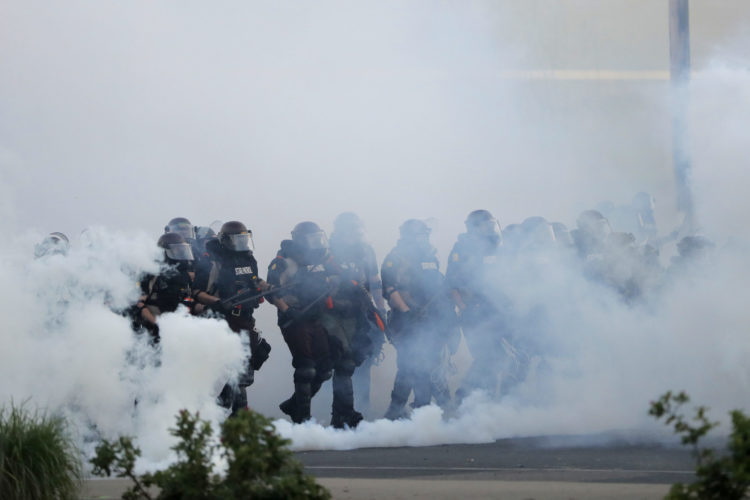
Police move toward demonstrators, Sunday, May 31, 2020, following the death of George Floyd, who died after being restrained by Minneapolis police officers on May 25.
This is not the first time I’ve wondered how people like Adams navigate the line between Black and blue. It has happened every time there is a police shooting. I don’t presume every Black police officer would answer the question as Adams did. But his answer, and how he got to it, makes for a story worth reading. Oddly, it offers a bit of beauty (humanity) that refused to yield to easy power and surrender to societal pain.
The short version: Adams grew up on Minneapolis’ North side, considered one of the rougher parts of the Twin Cities. He went to Minneapolis North High School. Once he became a cop, he continued to live in his old neighborhood, requested assignment to North as the school police officer, and volunteered to coach the school’s losing football team. With patience, determination and a lot of love, he turned that team into a winner — and no doubt turned some young lives around along the way.
Streeter wrote that far better, but still in tight form that shows how time and personality can be captured in two short paragraphs:
Adams could have left his neighborhood behind. But he never did. For all its troubles, he loved its rough-hewn warmth. As an officer, he became a fixture. “One of the rocks of this community,” as a local pastor described him.
When Adams decided to become a high school coach during his off time, he did so at his struggling alma mater, Minneapolis North, four blocks from his childhood home. He turned a doormat team into a champion, his coaching powered by his ability to connect.
Like all good stories, and like real life, this one has unexpected turns and an unpredictable ending. It offers some teachable moments about writing sense of place, character, and revelatory detail. And then there’s that sentence that caught my eye:
His work is a parable, testimony in troubled times to the power of everyday people who provide steadfast care to struggling communities.
In one sentence, Streeter captures the theme of his story. Combined with one additional sentence that sets the context, he has demonstrated how a nut graf can be woven into a narrative without interrupting the flow or tone. Here’s the paragraph:
Now, as his city struggles to deal with the coronavirus pandemic and to mend the wounds laid bare by Floyd’s death, Adams remains. His work is a parable, testimony in troubled times to the power of everyday people who provide steadfast care to struggling communities.
That one paragraph plants the story firmly in the time and place of the news, but also expands it to let Adams be representative of people like him around the country and world.


